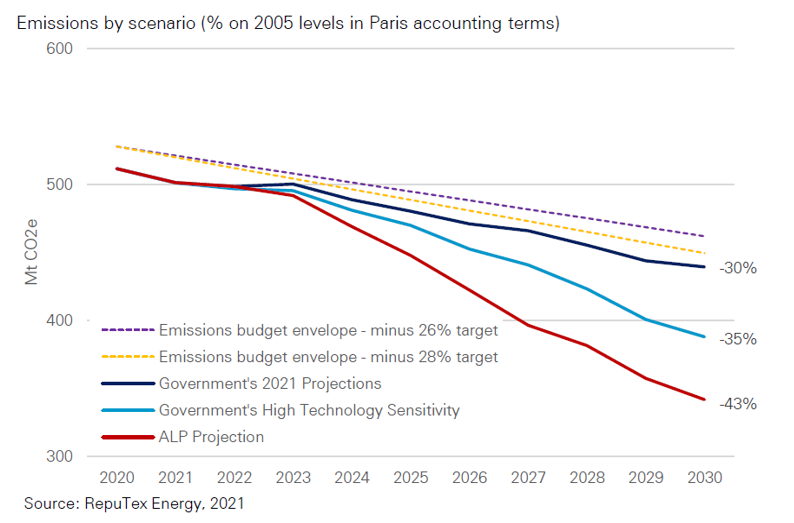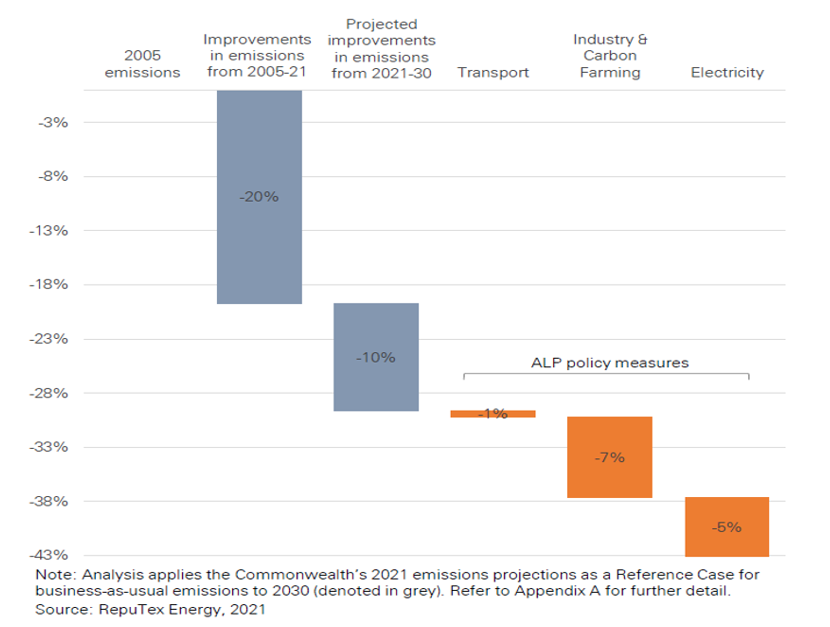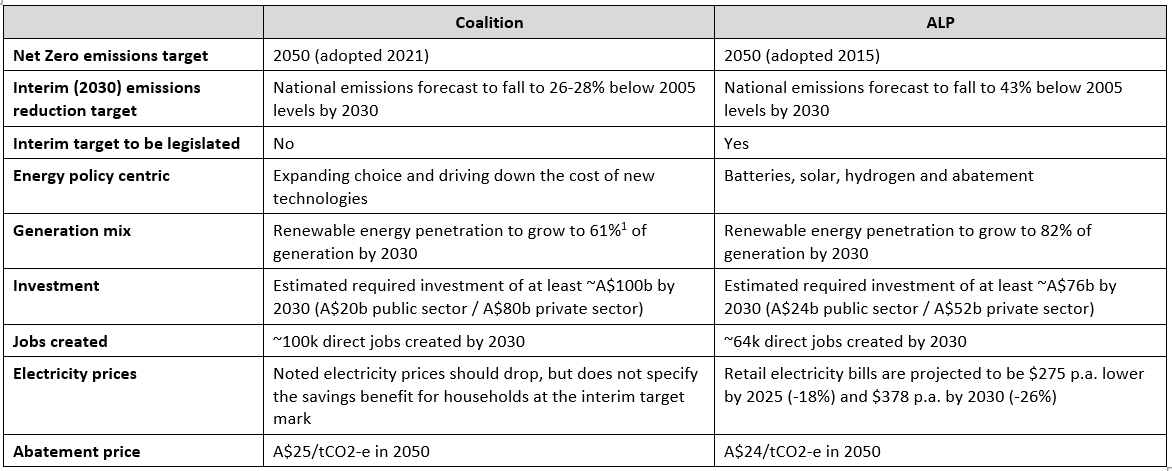Labor’s plan for a 40% Aussie emissions cut by 2030
Achieving Net Zero carbon emissions is critical to long-term climate goals.
After a prolonged period of a policy vacuum, Australia’s Net Zero commitment has received bipartisan political support. However, the trajectory of emissions reduction and policies to achieve this outcome varies significantly depending on which side of politics is advancing the plan.
We previously examined the Liberal-National Coalition’s (the Coalition) long-term emissions reduction plan in our December 2021 Global Matters article (The Australian Way - roadmap to Net Zero emissions by 2050). With a federal election looming, the Australian Labor Party (ALP) recently released its 2030 carbon emissions reduction proposal – the ‘Powering Australia Plan’. In this article, 4D Infrastructure’s Senior Investment Analyst Christopher James outlines the ALP’s carbon reduction policies, contrasting it with the Coalition’s.
Coalition vs ALP emission reduction targets
The ALP first established its 2050 Net Zero emissions target back in 2015, ahead of the United Nations Conference on Climate Change in Paris. It acknowledged that Australia’s transition required a decarbonisation pathway. However, it wasn’t until October 2021 that the Coalition introduced its policy target of Net-Zero by 2050.
While both parties target Net Zero by 2050, the ALP’s ‘Powering Australia Plan’ has a faster trajectory, introducing a suite of policy measures aimed at delivering national emissions reductions of 43% below 2005 levels by 2030.
In comparison, the Coalition’s current target is a more modest 26-28% reduction by 2030, while projecting a 30-35% actual reduction. To put both plans in perspective, Australia has already reduced emissions by around 20% on 2005 levels. The relative trend is depicted in the chart below.

Proposed ALP policies
The ALP’s ‘Powering Australia Plan’ is underpinned by policy measures in three key sectors of the economy – electricity, industry & carbon farming, and transport. In 2021 these sectors collectively accounted for around 79% of national emissions. The key policies and initiatives are below.
Electricity
- Rewiring the nation: Establishment of a dedicated public body to oversee the investment of A$20 billion to modernise Australia’s electricity grid and facilitate new renewable energy development and connections
- Community batteries & shared solar banks: A commitment of A$200 million to build 400 community batteries across Australia, and A$100 million for the development of shared solar banks
-
Public sector emissions: A commitment to reduce the Australian public service’s emissions to Net Zero by 2030 (excluding law enforcement and security agencies)
Industry & carbon farming
- Safeguard Mechanism: Maintain the current eligibility threshold for the Safeguard Mechanism, but gradually reduce the emissions cap from 2023 by 75%. Doing so will expand coverage from 28% of national emissions in 2020-21 to 34% by 2030
- National Reconstruction Fund (NRF): Establish a A$15 billion financing vehicle to drive investment in projects that boost regional economic development. A$3 billion (20%) of the NRF will be allocated to support the uptake of new clean energy and green technologies
- Apprenticeships: An A$100 million investment to support 10,000 new energy apprenticeships and A$10 million for a ‘New Energy Skills Program’
Transport
-
National electric vehicle strategy: An A$251 million investment for an electric car discount’ (exceptions/reductions for import tariffs and FBT), improvement of EV charging infrastructure, and A$14 million to establish a real-world emissions testing program (empowering decision making by providing consumers and fleet buyers with accurate information on vehicle emissions, fuel consumption and cost of ownership)
The chart below depicts the percentage of emissions reductions these policies are expected to deliver within the specified three key sectors.

The projected economic impact of the ALP’s ‘Powering Australia Plan’
By 2030 the ALP projects the economic impact of its policies to include:
- 63,994 direct and 604,000 indirect jobs;
- Estimated required investment of at least A$76 billion (A$24 billion public sector / A$52 billion private sector);
- Renewables to be 82% of the National Electricity Market (higher than the 68% forecast in the Coalition plan); and
- Annual average electricity retail bills are projected to decline by A$275 p.a. by 2025 (-18%) and A$378 p.a. by 2030 (-26%).
Policy comparison table

Conclusion
Australia is well-placed to take advantage of the decarbonisation thematic and pivot towards Net Zero emissions. Despite alternate pathways and pace of emission cuts, both the Coalition and ALP reduction plans will require substantial infrastructure investment and deployment. This represents a significant opportunity for infrastructure investors such as 4D, who seek to be part of the climate solution.
Invest across the globe
4D Infrastructure is a Bennelong Funds Management boutique that invests in listed infrastructure companies across all four corners of the globe. For more insights on global infrastructure, visit 4D’s website.
4 topics
1 contributor mentioned

